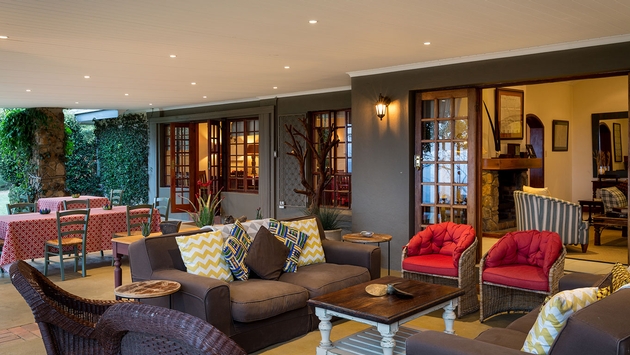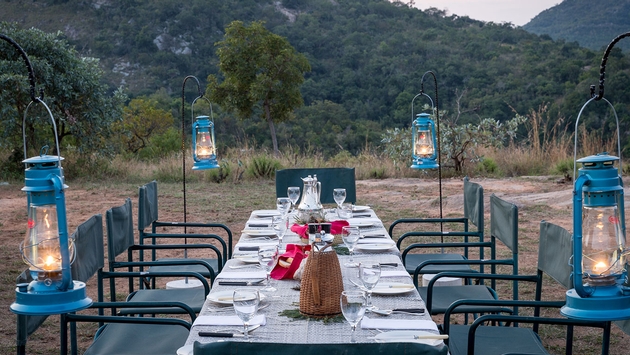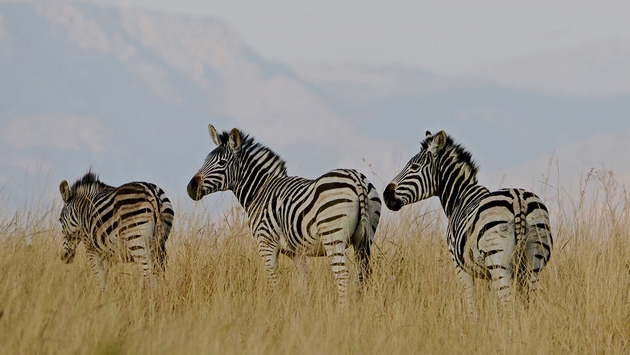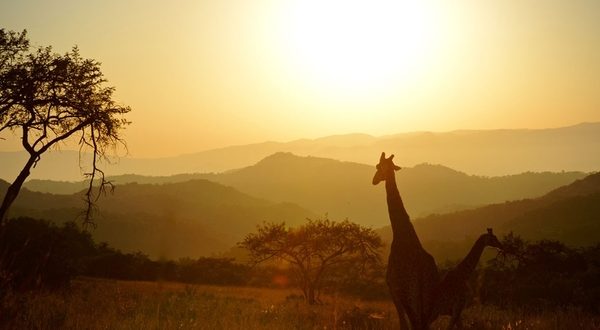[ad_1]
Mention South Africa to many travelers, and one of the first things they’ll think of is a safari adventure. The opportunity to see Africa’s famed “Big 5” animals, as well as a cornucopia of other wildlife, is a once-in-a-lifetime vacation for many.
On our trip to this dynamic country earlier this month, we also discovered something quite unexpected, and equally memorable—a bush retreat near the famed Kruger National Park. Tomjachu Bush Retreat, just outside of the city of Mbombela (Nelspruit), was sort of an accidental stop.
We had intended to do four nights of safari in Kruger, but there wasn’t availability at our safari resort for two of the nights. A friend in Cape Town highly recommended Tomjachu, so we opted for two nights there and then two nights of safari. It turned out to be the best decision of our two-week South African adventure.
Tomjachu is a mashup of the names of the three sons who inherited the land (Tom, Jack, Hugo). It is located an hour west of Kruger, and is spread over about 1,300 acres of gorgeous mountain terrain. The family has introduced non-predator animals here—giraffe, kudu, zebra, wildebeest, impala, etc., meaning that guests can safely hike by themselves, something you could never do in the national park.
The end result is a magical place where you encounter animals on foot, never knowing what you’ll see around the next corner. These animals are wild, for sure, so they’re wary of people, but we had many wonderful photo opportunities while out on the reserve’s pathways.
The main building, called the Homestead, features the dining area and a comfy library/study area, as well as an extensive deck area, where we enjoyed all of our breakfasts, gazing out across the terrain and taking in the distant mountain ranges.

There are three bedrooms attached to the Homestead, as well as three separate cottages that sleep 2, 2, and 4 people. The cottage residents can choose to eat at the Homestead or self-cater. There’s also a luxury villa high up on the hill, Valbonne Villa, which is self-catering and sleeps 6-12, perfect for an intergenerational family experience.
We stayed in the lovely Keeper’s Cottage, which featured a full kitchen, dining/living area, bath and bedroom. The accommodations were simple and comfortable, and our porch area featured a grand view of the valley beyond, as well as a hammock, which I made sure to use at every opportunity.
We ate all of our meals at the Homestead and were highly impressed not only by the food but by the service as well. The multi-course meals were all creative and flavorful. The cauliflower soup served at dinner one evening was some of the best soup I’ve ever tasted. We chatted with the chef on our last day and implored him to share his recipe secrets with us, which he gladly did.
One memorable experience was the bush dinner, which we arranged for on our second evening there. We started at 5 p.m., with a private game drive led by Lisa Marie, one of the resident animal experts. She got us close to many of the animals and explained much about their habits, breeding and how they fit into the Tomjachu ecosystem. Decades ago, the land here was used as a tobacco farm, and the family has mostly returned it to its natural state—although they are constantly fighting invasive species.

At 7 p.m., we arrived at The Lapa area, a beautiful clearing where the staff had set up a wonderful lantern-lit romantic dinner for two. We joked that it felt like being on an episode of “The Bachelor.” The multi-course meal was an experience we will always remember, and well worth doing when staying at the retreat.
There are plenty of things to do here, from picnic lunches to game drives and guided hikes to mountain biking. What’s more, there are plenty of relaxation opportunities. There are endless places to sit and read or just take in the stunning scenery. The on-site masseuse came directly to our cottage and set up her equipment, and we enjoyed back to back hour-long massages.
Jack Fillary, the son who now manages the retreat, explained that the average stay here is about three nights. “There are some travelers whom like to base themselves in one particular place and then explore a region. That’s usually your second- or third-time visitor to the country. They’ll explore the whole country as quickly as possible and then they’ll come back to an area they enjoy and plot it out a little bit and explore the region,” he said.
“For a traveler who’s here for two to three weeks, two or three nights at Tomjachu is perfect. Usually, we suggest it is a nice way to start your holiday or to end your holiday. Or if you were changing regions, it’s a great way to introduce yourself to the local bushveld (savannah) as we don’t have any big animals. So, it’s safe to hike and walk around or take a guided tour. You can get more of an understanding of what you’re looking at. This way, when you do get to Kruger, it’s not a complete shock,” Fillery said.
“There’s something magical about being able to walk through the bush on your own and to come across a zebra and a giraffe. And to see these things and experience them for yourself is that element of self-discovery and adventure that I think is something that you don’t truly get the opportunity to observe when you’re in some of the other reserves,” Fillery added.

There are some fantastic attractions in the local region, beyond Kruger. Quite close is the Blyde River Canyon and the Panorama route, with some of the best scenic drives in the world. The area has the oldest known cave system in the world, the Sudwala caves.
There’s Kaapsehoop, an old gold-mining town and escarpment that is located 35 minutes away. And Barberton is another old gold mining town also located a half-hour drive from the retreat.
“There’s also an advantage of staying somewhere like Tomjachu and then using it as a launching pad to explore the Kruger. In the evening after a day safari, you can stretch your legs and go for a nice walk, you can sit and enjoy a spectacular view—which you can’t really do in the same way in the Kruger,” Fillery said. “A lot of people really enjoy that experience of being slightly outside of the Park but still being in a beautiful natural environment.”
[ad_2]You can read more of the news on source
 Travelsmart
Travelsmart



